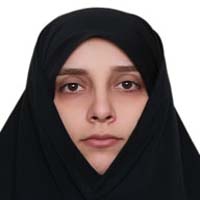Select the infill Architectural patterns, for historical Texture, with a focus on, physical-spatial featuresCase study: site of Qurkhaneh in Tehran
One of the important strategies for restoring vitality for historical con-texts is the existence of infill buildings. Since there is a new connection between existing elements and infill buildings, and because they are not built with its monuments at same time, there is an effect between the existing elements and the new constructions. As a result it will be pos-sible to have a better understanding for historical textures by studying physical-spatial features. Here is the questions: What is the best solution for designing infill building with regard to the physical-spatial features? In this article, has been attempted to identify the infill architectural pat-terns which are appropriate to the historical context by studying the physical-spatial features. In this way not only does generalized knowl-edge of the physical-spatial characteristics have been achieved, but also the physical-spatial characteristics for historical texture of the specific location called “Qurkhaneh” placed in the 12th district of “Tehran” has been studied. Morever, in this article the research method is descrip-tive-analytical and the data used in this procedure are collected from documentary studies, Delphi technique. For this purpose, interviews are done with 20 faculty members. In addition, samples are selected using snowball technique and ANP technique was used to weigh the charac-teristics. Based on this framework, understanding the physical-spatial characteristics of historical texture is one of the ways to discover the rules of the architecture which was invented by ancient and this iden-tification, helps to select the suitable pattern with texture. Consequen-tely, infill architecture in the historical texture is required be joint with context. Revitalizing the “Qurkhaneh” will be achieved by recognizing the capabilities of the old texture and its adaptation to the new fecade. As a result, usage the infill architectural patterns includes a range of similarity, facadism and contextual architectural patterns, will have more successful interventions in it.
-
Planning Children-Friendly Neighborhoods with an Emphasis on Participation (Case Study: South Pounak Neighborhood of Tehran)
Shifteh Farokhi, Seyyed Majid Mofidi Shemirani, *
Journal of Geography and Urban Space Development, -
Presenting the distribution pattern of rural settlements in forest areas; Case study: Hawraman World Heritage
Pegah Moradi, Samaneh Jalili Sadrabad, Ahmad Khalili*
Housing And Rural Environment,


